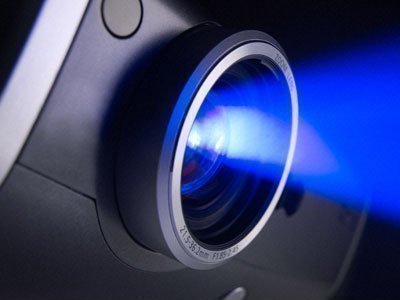Projector Lumens
Projectors have quite a variety of uses these days, whether in the boardroom or classroom to give a presentation, or the home to project digital, high definition TV and video to a screen. While there are many aspects that determine whether a projector will project high quality images (e.g. resolution, contrast, etc.), one type of measurement that users should be aware of is Lumens.
What are Lumens?
Lumens are a unit of measurement of the total brightness that comes from a light source, in this case, a projector. One may also see the term ANSI Lumens. ANSI is an acronym for the American National Standards Institute. In general, the more lumens a projector has, the brighter the image on the screen.
Why do Lumens Matter?
Lumens are extremely important when choosing a projector if the user wants a bright, sharp image to be displayed. Usually, the brighter the image, the sharper the contrast will be. Lumens are extremely important due to the fact that projectors with lower Lumens require ambient lighting to be low. In addition, less lumens generally means that the projector will need to be closer to the screen. These two factors have obvious consequences for many conference rooms, classrooms, lecture halls, and home theater set ups.
Examples of Lumens in Daily Life
Before buying the projector with the most lumens, consumers should first figure out how many lumens are required for their specific needs. For instance, a candle gives off about 14 lumens, a sunset 400. Most offices that have florescent lighting give off about 400 lumens and lighting on a movie set is about 1,000 lumens. High noon on a sunny day can be as much as 100,000 lumens. Most digital projectors usually rate from about 500 lumens to over 3500 lumens.
Projectors with Lumens Ratings Under 1,000
Projector users generally need to keep the lighting very low and project their image from a relatively short distance (home theater, small meeting room, etc.) when using projectors that have a lumens rating of fewer than 1,000. However, these projectors are very affordable and would be a good fit for someone who likes to view TV in a low light setting.
Projectors with Lumens Ratings from 1,000 to 2,000
Projectors with these lumen ratings work well in classrooms and medium size meeting rooms. While bright lighting can degrade image quality, lowered lighting, shades, etc. is generally enough for viewers to get a high quality image.
Projectors with Lumens Ratings from 2,000 to 3,500
These projectors are generally moderate to high priced. They deliver extremely bright images and do not require lighting to be lowered. However, lowered lighting, especially in bright lighting situations, can be helpful.
Projector Lamps are the Lumens Source
The part of the projector that produces light is the lamp, which has a bulb. There are a variety of bulb types including UHP, UHE, halogen, and metal halide. The bulb is extremely important to the image’s brightness. It should be noted that the actual amount of light (lumens) that a bulb produces will decline over time. For instance, lamps that are rated for 2,000 hours of use can lose 50% of their brightness by the 1,000 hour mark.
Choosing the type of lamp the projector uses can help keep the brightness level high throughout the bulb’s life. For instance, lamps that are UHP or UHE can retain about 80% of their brightness during their entire lifetime.


Comments - 5 Responses to “Projector Lumens”
Sorry but comments are closed at this time.